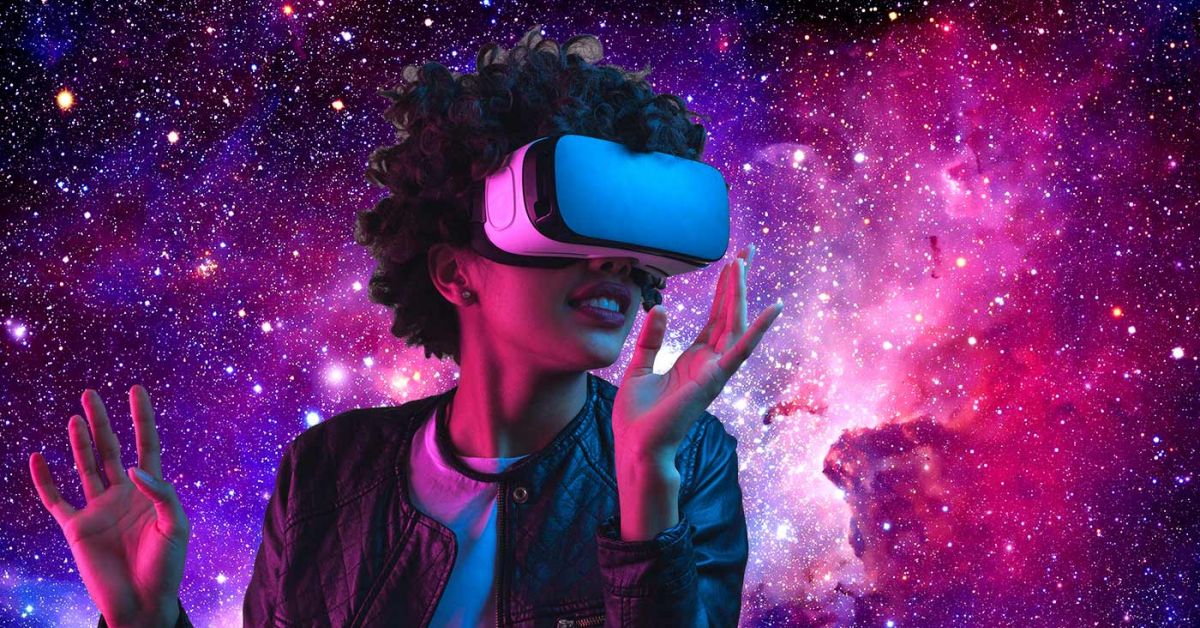Nicole Hope Garcia-Gonzalez
Important Developments in Educational Technology for K–12 Education
Virtual Reality
The way of the world as we know it revolves around technology. We are living in the digital age! Just as our technology has evolved, so has our educational teachings and how we implement our instruction. This is all too familiar in the recent years of enduring a global pandemic, we have had to adjust our instruction from in-person to remote; while also having to apply different teaching strategies for each. We’ve learned how to teach and lecture using applications such as Zoom and Google Classroom, and engaging students through assessment gamification outlets like Kahoot.com, and Quizizz.com.
Another new method of teaching that is being introduced to the educational technology field is virtual reality or VR for short, a component of Game Engagement Theory. The potential of certain types of games to engage and encourage learners is one of the advantages of computer game–based learning. In recent studies, virtual reality is becoming another tool in the teaching toolbox. VR is important to K-12 educational technology because it enhances student academic performance and motivation. Martín-Gutiérrez et al., (2017) expressed the use of VR in education offers a bigger interest beyond just learning; it contributes to student development in different ways, such as academic performance and motivation, social and collaborative skills and cognitive and psychomotor skills. (p 220) Formal applications of VR in education along with the support of a partnered digital library can bring about more opportunities to bring safe education for students in the studying fields of construction, mining, architecture, archeology, chemical processing, and biology. This gives students the upper hand in any one of these career pathways by becoming familiar with places they couldn’t normally go to and practicing using virtual reality chemicals processing without the hazards. Virtual reality opens the world to various studies and is transdisciplinary. Pupo (2013) expresses from the cognitive perspective, transdisciplinary intends to integrate the culture through necessary knowledge, such as critical culture, relevant knowledge, teachings of all sciences (from the physical, biological and sociocultural perspective) and ways to face uncertainty, such as the comprehension and ethics of being human. (p 219) Student academic performance strengths with the vast amount of knowledge and engagement that VR teaching can bring about in the library and classroom. A study led by new library and information students took place in 2020 over virtual reality being used as a tool for student orientation in distance education programs. The study investigates using experimental research methodology and master of library science students entering a library and information science (LIS) program. Through the use of VR, the students doctoral research revealed Valenti, Lund, and Wang (2020) students who received a VR orientation had more optimistic views about the technology, saw greater improvement in scores on an assessment of knowledge about their program and chosen profession, and a small decrease in program anxiety compared to those who received the same information as standard text-and-links. The majority of students also indicated willingness to use VR technology for learning for long periods of time (25 minutes or more).
All in all, virtual reality is on the horizon of a useful tool to adapt to our educational instruction. Funds for the technology, training resources for teachers and librarians, and collaboration among educators is necessary for results to have an impact in the educational system. Virtual reality is significant in K-12 education because it improves student academic achievement and engagement.
Research Questions About VR:
Research Question 1: Will VR improve students’ knowledge of topics related to their library
school and basic library topics, relative to those without a VR experience?
Research Question 2: Will VR reduce students’ anxiety about their library program, relative
to those without a VR experience?
Research Question 3: Will students’ perceptions towards the usefulness of VR be
significantly different based on whether or not they utilized the VR experience?
Research sources:
Calvert, P. (2019). Virtual reality as a tool for teaching library design. Education for Information,
35(4), 439–450. https://doi-org.ezproxy.shsu.edu/10.3233/EFI-170150
Díaz-López, L., Tarango, J., & Contreras, C.-P. (2019). Strategies for inclusive and safe
education using virtual reality: from the digital library perspective. Digital Library
Perspectives, 35(3/4), 216–226.
Valenti, S., Lund, B., & Wang, T. (2020). Virtual Reality as a Tool for Student Orientation in
Distance Education Programs: A Study of New Library and Information Science Students.
Information Technology and Libraries,
39(2)https://doi-org.ezproxy.shsu.edu/10.6017/ital.v39i2.11937
39(2)https://doi-org.ezproxy.shsu.edu/10.6017/ital.v39i2.11937

